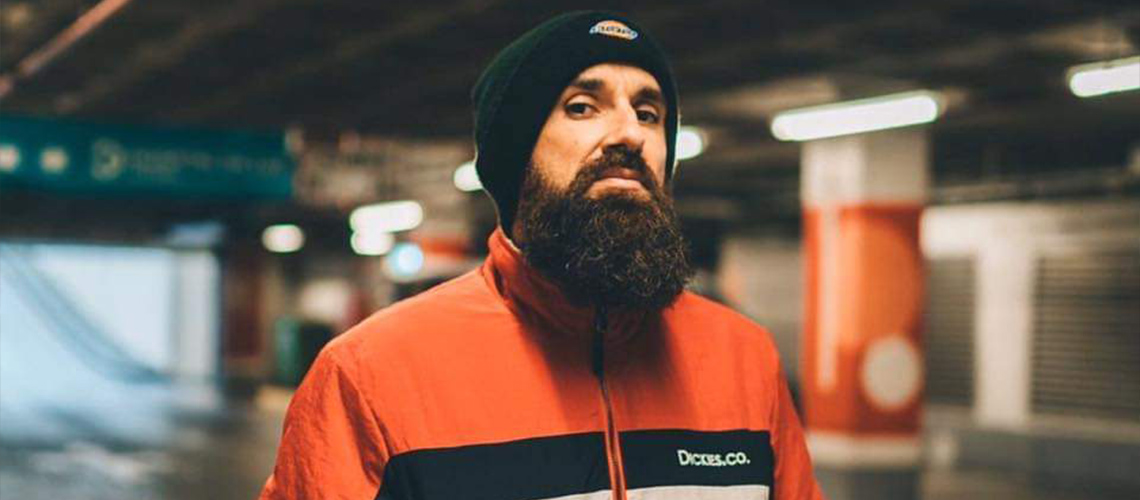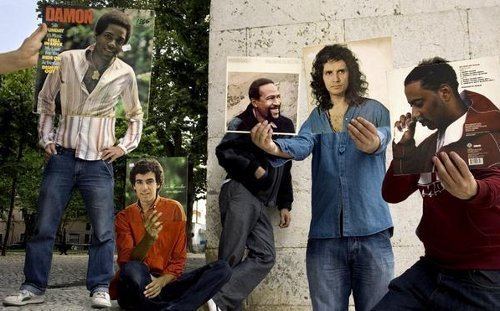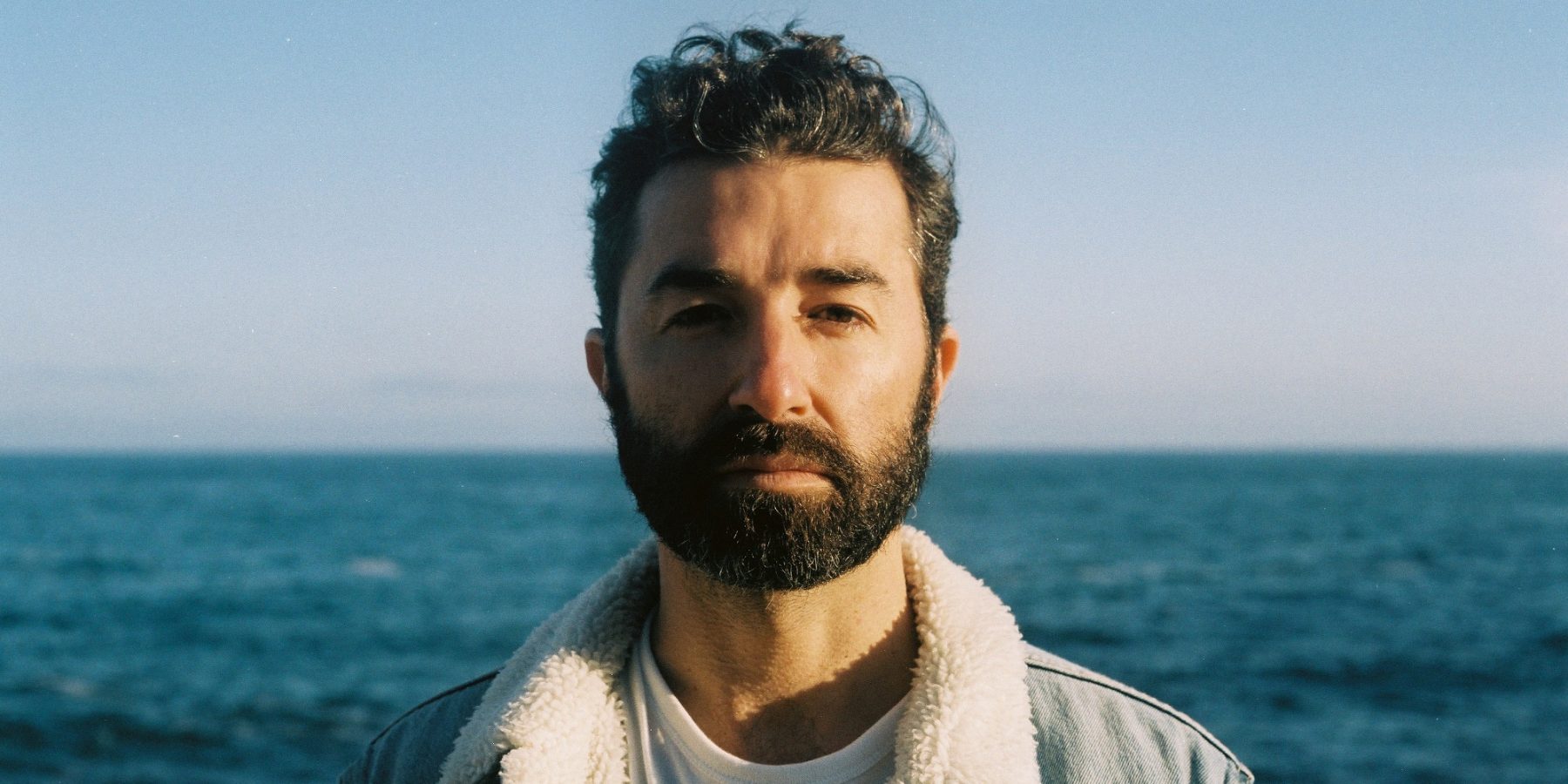José Manuel Cerqueira Afonso dos Santos (2 August 1929 in Aveiro – 23 February 1987 in Setúbal) was a Portuguese singer and songwriter. He is also known by the familiar diminutive of Zeca Afonso, although he never used this stage name. He is the author of Grândola, Vila Morena which was used by the Armed Forces Movement to confirm that the April 25 Revolution was under way.
Personal life and training
José Afonso, who also became known as Zeca Afonso, was born on August 2, 1929, in the parish of Glória in the municipality of Aveiro. From a bourgeois family, he was the son of judge José Nepomuceno Afonso dos Santos, and his wife, Maria das Dores Dantas Cerqueira, a primary education teacher; he is from the region of Fundão, she is from Minho, from Ponte de Lima.
He lived in Aveiro until he was three years old, in a house in Largo das Cinco Bicas, with his aunt Gé and uncle Chico, as well as with his brother João Cerqueira Afonso dos Santos (1927), a future lawyer, father of two of his nephews (João Dating Afonso dos Santos, doctor, and Mário Namora Afonso dos Santos, architect). Precisely, at the age of three, he was taken to Angola, where his father had been placed as a delegate to the Attorney of the Republic, in 1930, and where his sister Maria Cerqueira Afonso dos Santos, mother of his nephews, would be born in Silva Porto. also musicians: João Afonso Lima and António Afonso Lima.
The physical relationship with nature caused him a deep connection to the African continent, which will be reflected throughout his life. The thunderstorms, the forests and the great rivers crossed on rafts hid the colonial reality from him.
In 1937 he returned to Aveiro, but in the same year left for Mozambique, where he was reunited with his parents and brothers in Lourenço Marques.
The following year, he returned to Portugal, going to live in Belmonte, with his uncle Filomeno, who held the position of mayor. He completes his primary education in this locality, living in a heavy Salazar environment, at his uncle’s house, being forced to wear the attire of the Portuguese Youth.
In 1939 his parents went to live in Timor, where they would be captives of the Japanese occupiers for three years, between 1942 and 1945. During this period, Zeca Afonso did not hear from his parents.
He attended the Liceu Nacional D. João III and the Faculty of Arts of Coimbra, and was a member of the Orfeon Académico of Coimbra and the Tuna Académica of the University of Coimbra; already at that time, he proved to be a particularly gifted interpreter of Coimbra’s song, having assimilated the atmosphere of change that, at that time, was beginning to manifest itself in that locality. In 1948 he completes the General Course of the Lyceums, after two leads.
He meets Maria Amália de Oliveira, a seamstress of humble origins, with whom he comes to marry in secret, given the family’s opposition. He continues in associative life, traveling with the Orfeão Académico de Coimbra and the Tuna Académica of the University of Coimbra, at the same time as part of the Académica football team. In 1949 he enrolled in the Historical-Philosophical Sciences course at the Faculty of Arts of the University of Coimbra. He returns to Angola and Mozambique, as part of a delegation from the Orfeon Académico de Coimbra.
Professional, artistic and political career
From the beginning of the teaching career to the 1960s
In January 1953, her first child, José Manuel, was born. To support his family, Zeca Afonso gives explanations and proofreads texts in the Diário de Coimbra. At the same time, she recorded her first album, Fados de Coimbra. She has great economic difficulties, as she says in a letter sent to her parents in Mozambique. Even before finishing the course, you are allowed to teach in Technical Education.
From 1953 to 1955, in Mafra and Coimbra, he fulfilled the Mandatory Military Service; shortly after, she began teaching, passing successively through Mangualde, Alcobaça, Aljustrel, Lagos, and Faro. He began his teaching duties in Lagos on October 29, 1957, at the Escola Comercial e Industrial Vitorino Damásio.
In 1956 he was placed in Aljustrel and divorced Maria Amália. In 1958 he sends his children to Mozambique, where they are taken care of by their grandparents. Between 1958 and 1959 he taught French and History at the Escola Comercial e Industrial de Alcobaça.
Despite the demands of his profession, he did not forget his connections to Coimbra, where he recorded his first album, in 1958. He was influenced by the currents of change that were felt in that locality, and by the contact with figures such as António Portugal, Flávio Rodrigues da Silva, Manuel Alegre, Louzâ Henriques, and Adriano Correia de Oliveira, who especially marked his work Coimbra.
From the period of social intervention to expulsion from education
He often participates in popular parties and sings in collectives, releasing, in 1960, his fourth album, Balada do Outono. In 1962, he closely followed the academic crisis in Lisbon, living in Faro with Luiza Neto Jorge, António Barahona, António Ramos Rosa. He starts dating Zélia, a native of Fuzeta, with whom he will marry.
This is followed by a new tour in Angola, with Tuna Académica from the University of Coimbra, in the same year that the Coimbra Orfeon of Portugal album was released. In this record, José Afonso breaks with the accompaniment of Coimbra guitars, being accompanied, in the songs Minha Mãe and Balada Aleixo, by the violas of José Niza and Durval Moreirinhas (1937-2017).
There follows a period of 6 years, 1962 to 1968, in which Zeca begins his musically richest period, creating the first intervention songs. It was during this period that he met his friend and guitarist Rui Pato, a young medical student, with whom he recorded 49 songs and toured the country in dozens of shows in workers’ collectives, student associations, film clubs, wherever he was called. to use his song as a weapon against the Salazar dictatorship. During this period, he always delegated the accompaniment and arrangements of his songs to Rui Pato.
In 1963, he finished his degree in Historical-Philosophical Sciences, with a thesis on Jean-Paul Sartre, entitled Substantialist implications in Sartrean philosophy.
In the same year, the first themes of a markedly political nature were published, Os Vampiros and Menino do Bairro Negro — the first against the oppression of capitalism, the second, inspired by the misery of Bairro do Barredo, in Porto — were part of the album Baladas de Coimbra, that would be banned by Censorship. Os Vampiros, together with Trova do Vento que Passa (a poem by Manuel Alegre, set to music by António Portugal and sung by Adriano Correia de Oliveira) would become symbols of anti-Salazarist resistance at the time.
He tours Switzerland, Germany and Sweden, as part of a group of fados and guitars, in the company of Adriano Correia de Oliveira, José Niza, Jorge Godinho, Durval Moreirinhas and the Lisbon fado singer Esmeralda Amoedo.
In May 1964 José Afonso performed at the Sociedade Musical Fraternidade Operária Grandolense, where he was inspired to write the song Grândola, Vila Morena. The song would become the password of the Armed Forces Movement in the April 25, 1974 coup, remaining one of the most significant songs of the revolutionary period. In that same year, the albums Cantares de José Afonso and Baladas e Canções were released.
Still in 1964, José Afonso settles in Lourenço Marques, with Zélia, reuniting with the children of his previous marriage. Between 1965 and 1967 he taught at Liceu Pêro de Anaia, in the city of Beira, and in Lourenço Marques. He collaborates with a local theater group, putting to music a play by Bertolt Brecht, The Exception and the Rule. He speaks out against colonialism, which causes him problems with the PIDE, the political police of the Estado Novo. In Mozambique, his daughter Joana was born in 1965.
He lived, between 1964 and 1967, in Mozambique, accompanied by his two children and his partner, Zélia, having taught in Beira, and in Lourenço Marques. At this point, he began his political career, in defense of the ideals of independence, which earned him the attention of agents of the colonial government.
Political intervention until the 25th of April Revolution
When he returned to Portugal, in 1967, he was placed as a teacher in Setúbal; however, he only teaches for a short time, as he is expelled from official education after a period of illness. To survive, he starts giving explanations. From that year on, he definitely became a symbol of democratic resistance. He maintains contacts with the League of Revolutionary Unity and Action and the Portuguese Communist Party, although he remains independent of parties, he is arrested by the PIDE.
He continues to sing and participates in the 1st Meeting of Chanson Portugaise de Combat, in Paris, in 1969. He also records Cantares do Andarilho, receiving the Casa da Imprensa award for Best Record of the Year, and the award for Best Interpretation. So that his name is not censored, Zeca Afonso is referred to in the newspapers by the anagram Esoj Osnofa.
In 1971 he edits Cantigas do Maio, in which Grândola, Vila Morena appears, which he ends up performing for the first time in a concert held on May 10, 1972 at the Burgo das Nações university residence, today Auditorio da Galicia, in Santiago de Compostela. Zeca participates in several festivals, a book about him is also published and the LP Eu vou ser como a toupeira is released. In 1973 he sings at the III Congress of the Democratic Opposition and records the album Vemm mais Cinco. At the same time, he begins to devote himself to singing, and supports various popular institutions, while continuing his political career in the League of Revolutionary Unity and Action.
Between April and May 1973 he was detained in the Forte-prisão de Caxias by the PIDE / DGS.
Period after the April 25 Revolution
After the Revolution of 25 April 1974, he emphasized his defense of freedom, having held several sessions to support various movements, in Portugal and abroad; he also resumes his role as a teacher. He continued to sing, recording the LP Coro dos Tribunais, while also being involved in numerous sessions of Canto Livre Perseguido, as well as MFA literacy campaigns. His political intervention does not stop, becoming an admirer of the PREC period. In 1976 he declared his support for the presidential campaign of Otelo Saraiva de Carvalho. That year, he was also a municipal candidate, in Setubal, for the GDUP, along with Acácio Barreiros.
His last shows will take place in the coliseums of Lisbon and Porto, in 1983, at an advanced stage of his disease (amyotrophic lateral sclerosis). At the end of the same year, he was awarded the Ordem da Liberdade by Ramalho Eanes, but the singer refused the distinction.
In 1985, his last album of originals was released, Galinhas do Mato, in which, due to the state of his illness, Zeca was unable to interpret all the songs planned. The album ends up being completed by José Mário Branco, Sérgio Godinho, Júlio Pereira, Né Ladeiras, Helena Vieira, Fausto and Luís Represas, among others. In 1986 he supported Maria de Lourdes Pintasilgo’s candidacy for President of the Republic.
José Afonso spent the last years of his life in Vila Nogueira de Azeitão, near Setúbal, with his partner Zélia.
He died on February 23, 1987, at Hospital de São Bernardo, in Setúbal, at three o’clock in the morning, a victim of amyotrophic lateral sclerosis. His remains rest in the Nossa Senhora da Piedade cemetery in Setubal.
His funeral, in Setúbal, was a massive event, where close to twenty thousand people took to the streets to pay posthumous tribute to this great figure of Portuguese music.












Quanto talento.. Gratidão aos Homens de ABRIL, viva a Liberdade!!
[…] Zeca Afonso, Madredeus, Xutos & Pontapés, Rádio Macau, Azeitonas. Yes, there could be many others […]
[…] collaboration with other musicians such as The Chieftains, Pete Seeger, José Afonso, Kepa Junkera, Carlos do Carmo, Chico Buarque or Sara Tavares stands out.Júlio Pereira has 20 […]